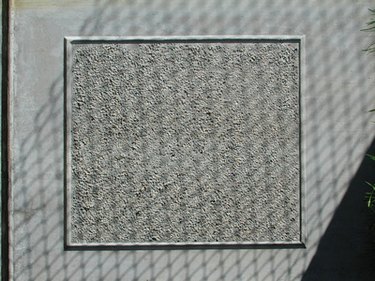
Post-tensioning can be used for any poured-in-place concrete slabs. The system provides superior strength for concrete, utilizing the structural properties of the steel reinforcing tendons. The system is very efficient, allowing the concrete to work in compression and the steel in tension. Post-tensioning is very similar to prestressing, and it has similar pros and cons.
Unidirectional
Video of the Day
Post-tensioned concrete slab tendons are unidirectional, snaking through the concrete to provide superior tension. Perpendicular to the tendons, the banded tendons run with the columns. This system makes the slab extremely efficient. On the other hand, the banded and distributed tendons limit the potential forms of the slab.
Video of the Day
Engaging Steel
Post-tensioned concrete slabs allow the structure to fully utilize the tensile strength of the steel reinforcing and the compressive strength of the concrete slab. However, the sheaths for the steel tendons must be carefully placed to provide the proper camber to the concrete slab; this requires more time to erect the structure than prestressed or traditional concrete.
Elastic Shortening
Similarly to prestressed concrete, post-tensioned concrete loses tension in the tendons over time. The elastic shortening, installation and interaction of the concrete and steel tendons hastens the loss of tension in the tendons. Nevertheless, the post-tensioned concrete still has more tensile strength and efficiency than traditional concrete slabs.
Creep
Over time, more post-tensioning is lost because of concrete shrinking with curing, concrete creep or slackening and steel relaxing. Although the post-tensioning lessens, this type of slab is still much more efficient than traditional slabs.
Transportation
Because the slabs are constructed in place, the equipment, concrete and tendons must be transported to the site. The slabs and tendons are subject to climatic conditions, not cured in a climate-controlled space like prestressed, precast concrete. Nevertheless, the transportation fees are smaller, compared to prestressed concrete elements.